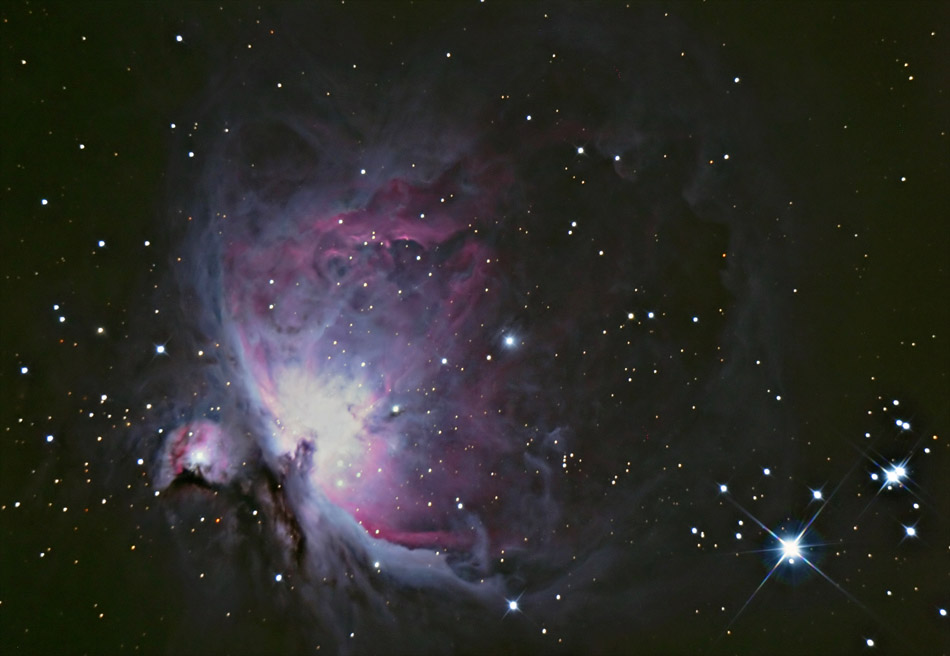At a Glance
- Recent observations of the Type Ia supernova SN 2020nlb in the galaxy Messier 85 have provided crucial insights into the behavior and evolution of these stellar explosions.
- The study utilized ground-based telescopes to conduct extensive photometric and spectroscopic observations of SN 2020nlb. It presented high-quality spectra and multi-color photometry.
- SN 2020nlb exhibited faster fading than an average Type Ia supernova, indicating a lower luminosity than this class’s typical supernovae.
- Spectroscopic observations revealed intriguing details about SN 2020nlb’s evolution, showing shifts in ionization balance and strong features from singly ionized metals at early times.
- Comparison of SN 2020nlb’s nebular spectra to those of other Type Ia supernovae suggested a possible trend where more luminous supernovae at peak tend to have higher ionization in the nebular phase, highlighting potential differences within the Type Ia supernova population.

A recent study has shed new light on the nature of Type Ia supernovae (SN Ia) through the detailed examination of SN 2020nlb, a supernova discovered in the lenticular galaxy Messier 85 (M85) located approximately 60 million lightyears away. Type Ia supernovae are significant to the scientific community as they provide crucial information about the evolution of stars and galaxies. These supernovae are found in binary systems where one of the stars is a white dwarf.
A team of astronomers led by Steven Williams of the University of Turku conducted extensive observations of SN 2020nlb using ground-based telescopes such as the Liverpool Telescope (LT) and Nordic Optical Telescope (NOT). The observations, presented on the pre-print server arXiv, included high-quality spectra and multi-color photometry, providing a wealth of data about the properties of this supernova. The researchers found that SN 2020nlb faded faster than an average Type Ia supernova, indicating a lower luminosity than this class’s typical supernovae.
The spectroscopic observations revealed intriguing details about SN 2020nlb’s evolution. The earliest spectra showed strong features from singly ionized metals, suggesting lower-excitation ejecta at the earliest times. As the supernova brightened towards its peak, the spectra became hotter and more similar to other Type Ia supernovae. Additionally, a sequence of nebular spectra taken up to 594 days after maximum light provided rare insights into the late-phase behavior of SN Ia, with significant shifts in the ionization balance of the ejecta.
Furthermore, the study compared the nebular spectra of SN 2020nlb to those of other Type Ia supernovae and identified a possible trend where more luminous supernovae at peak tend to have higher ionization in the nebular phase. However, there were also notable outliers, indicating potential differences between SN 2020nlb and the bulk of the normal Type Ia supernova population.
In conclusion, the comprehensive observations of SN 2020nlb have provided valuable insights into the behavior and evolution of Type Ia supernovae, offering essential clues for understanding the complex processes involved in stellar explosions and their implications for the broader field of astrophysics.
References
- Nowakowski, T. & Phys.org. (2024, January 23). Astronomers inspect evolution of a nearby Type Ia supernova. Phys.Org; Phys.org. https://phys.org/news/2024-01-astronomers-evolution-nearby-ia-supernova.html
- Williams, S. C., Kotak, R., Lundqvist, P., Mattila, S., Mazzali, P. A., Pastorello, A., Reguitti, A., Stritzinger, M. D., Fiore, A., Hook, I. M., Moran, S., & Salmaso, I. (2024). Observations of type Ia supernova SN 2020nlb up to 600 days after explosion, and the distance to M85 (arXiv:2401.08759). arXiv. https://doi.org/10.48550/arXiv.2401.08759











